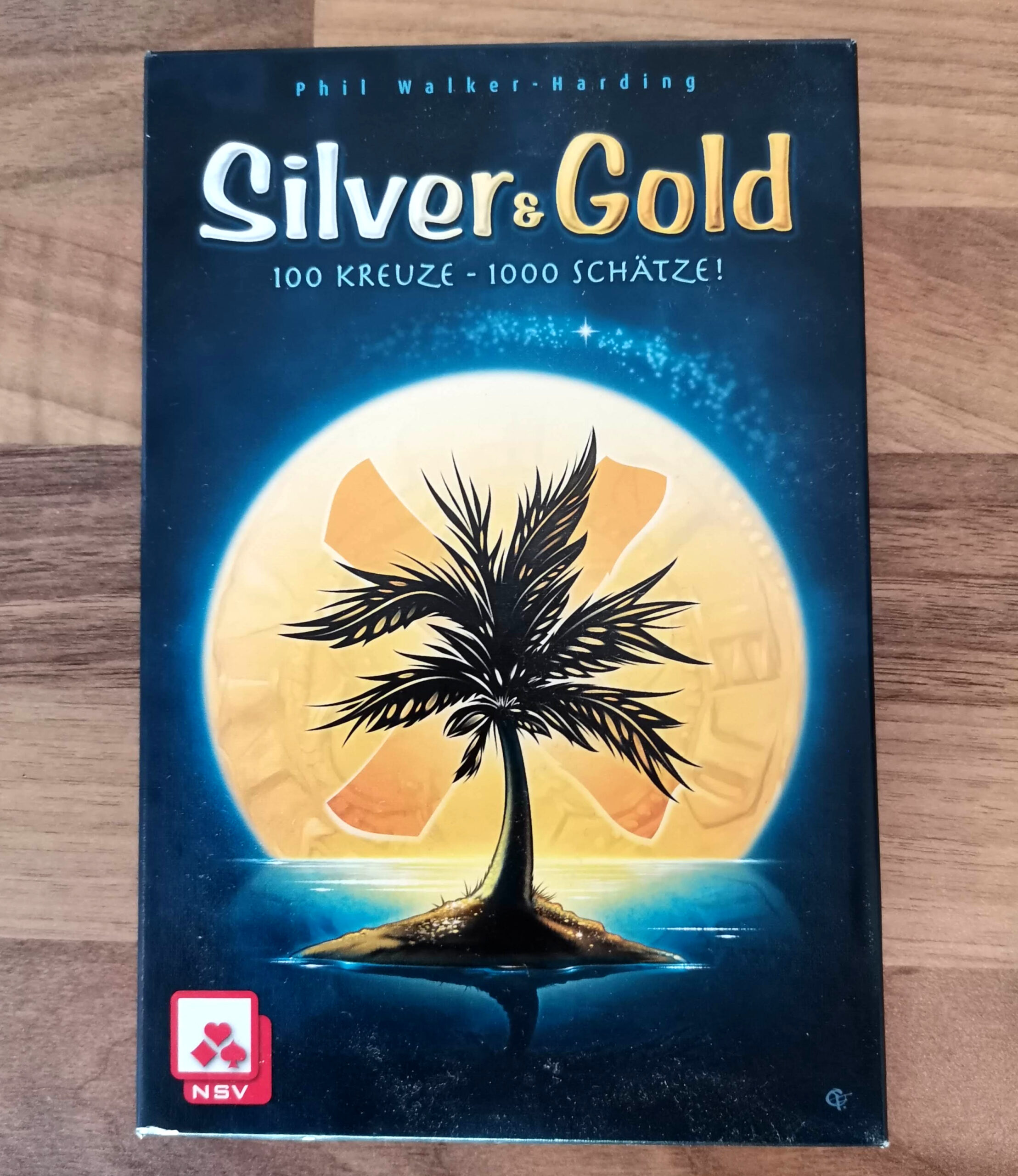Following with the card theme from my previous review of Palm Island, here’s another small and fast game – Silver & Gold. Designed by Phil Walker-Harding and published in 2019, this small box flip and write game promises treasure island fun for the family, but does it deliver? Let’s have a look.
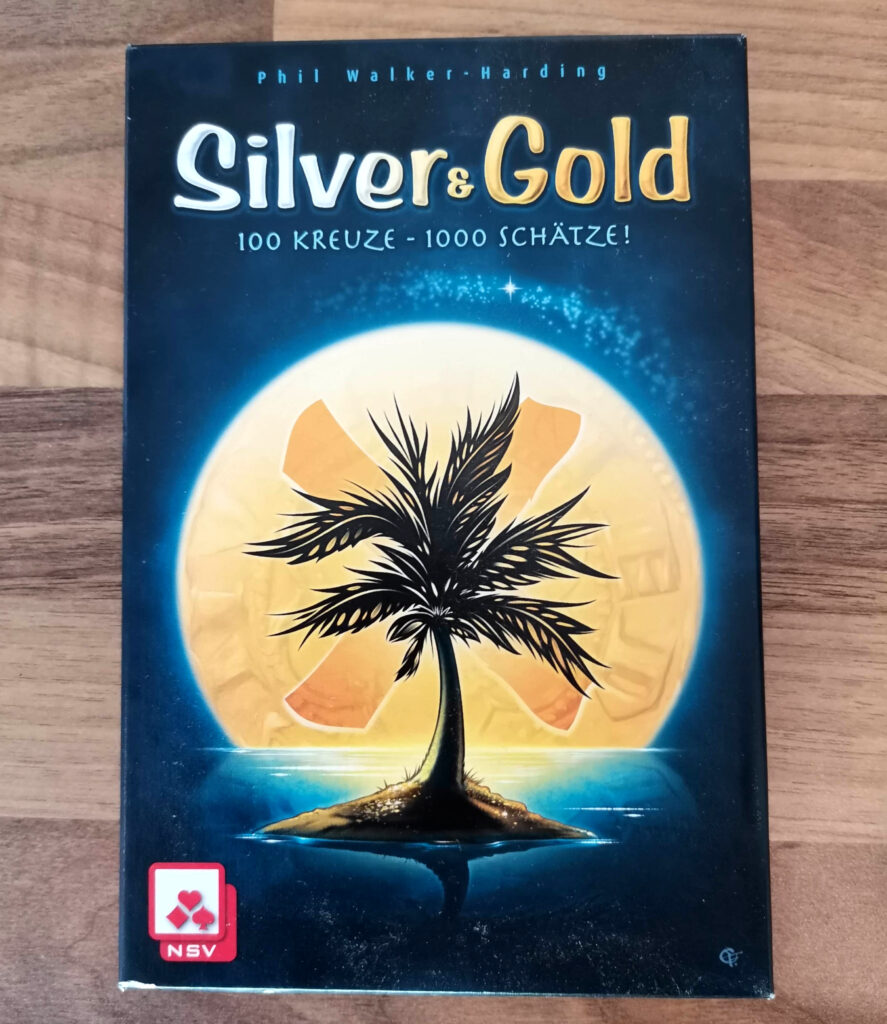
What’s In The Box?
Silver & Gold comes in a small box and comprises of some cards, a small rulebook, and some dry-wipe pens. There are four score cards for the players, one round tracker card that sits in the middle of the table, eight expedition cards, and finally 47 treasure map cards.
The cards are wipeable, but don’t feel overly plastic. Along with the cards are four dry-wipe markers which feel really nice to draw crosses with, and cover well when you write. And that’s all there is, I told you it was a small box game.
How Does It Play?
Setup
The idea of Silver & Gold is that the players are treasure hunters, landing on small islands and exploring, looking for gold. The way the game works is by players choosing two of the four treasure map cards they’re dealt, which go face-up in front of them. There are eight expedition cards, each with a polyomino shape on them. Before each round these are shuffled, and one discarded, unseen by the players. The round marker card shows a reminder of the eight possible shapes, but you never know which one won’t be in the current round.
Four treasure map cards are turned face-up in the middle of the table to create a supply, and then each player takes a marker and a scorecard, a starting player is chosen, and it’s time to play.
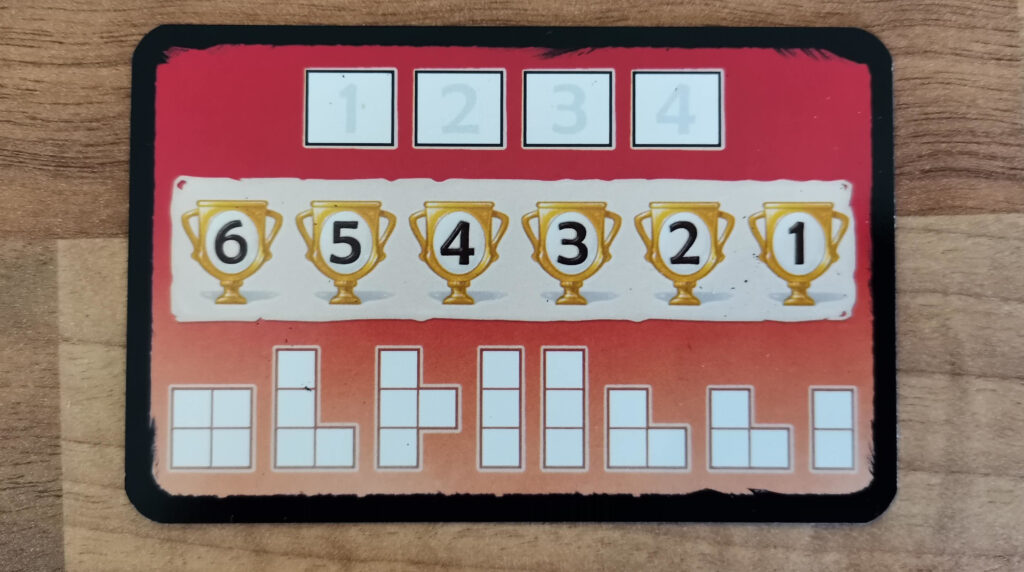
Gameplay
For each turn of the round, the starting player turns over the top card of the expedition deck. The card shows a shape. All of the players now cross that shape out on either of their treasure map cards. The shape can be rotated, mirrored and flipped, as long as the structure of it remains the same. If a player cannot (or doesn’t want to) cross the shape out, they can choose any one square on either card and cross that out instead.
Once every player has drawn their crosses, any player who has completed a card (starting with the starting player and working clockwise) can put the completed map to one side, and choose one of the four in the supply in the middle of the table to take. Then a new card from the treasure map deck takes its place.
Bonuses
Some of the squares that get crossed-out have bonus symbols on them, and each of them does something different.
Red crosses – when you cross out a red cross, you can immediately cross out another square of your choice on either of your cards. This can be worked into combinations where you might cross out a red cross, then choose to cross out another one, which then lets you cross out another one, and so on.
Coins – If you cross out a coin, you cross out the next available coin space on your scoring card, working from left-to-right, top-to-bottom. Once an entire row is crossed-out, at the end of that turn each player (starting with the starting player again) crosses out the next available trophy on the round marker card, and writes the number on that trophy in the space at the end of that coin row on their score card. As the trophies get claimed, the rewards decrease.
Palm trees – When you cross out a palm tree you immediately score one point for that tree, plus an extra point per palm tree visible in the four card supply in the middle of the table. That score is written in a box at the bottom of your scoring card, but timing is crucial as you can only score palm trees four times in total during the game.
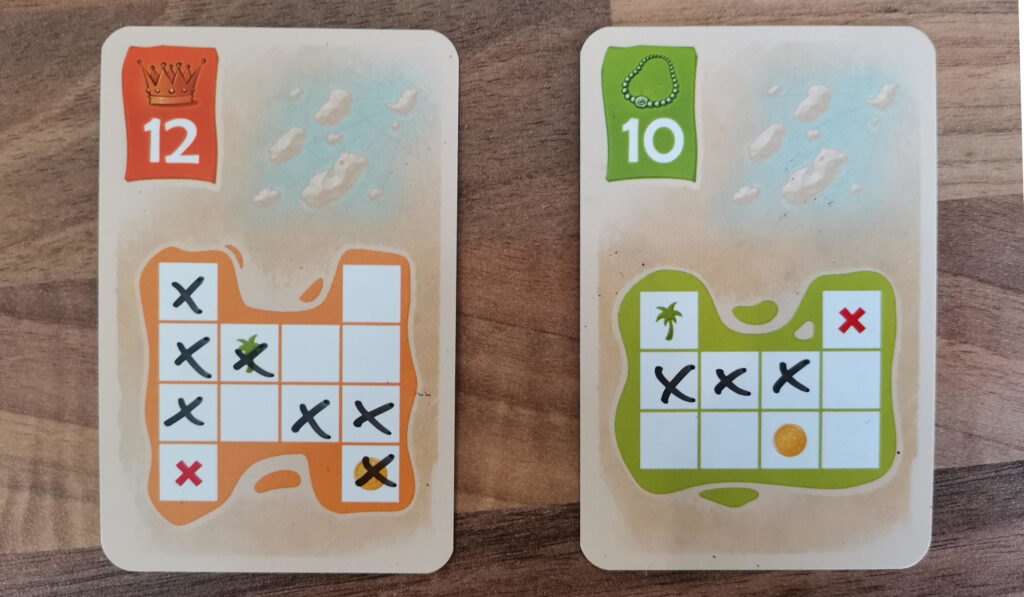
Scoring
After the last of the seven expedition cards is revealed, it’s the end of the round. The next round marker on the round card is crossed off, then all eight expedition cards are shuffled, one removed, and play continues just like the start of the game.
After the fourth and final round, final scores are calculated. Each map card you’ve completed has a point value at the top, and these are all totaled. Some cards also have a wax seal at the top, which award bonus points. As an example, if you had a card with an orange seal with a 2 in it, and another with a 1 in the seal, you would earn 3 (2 + 1) points per completed orange map in your possession.
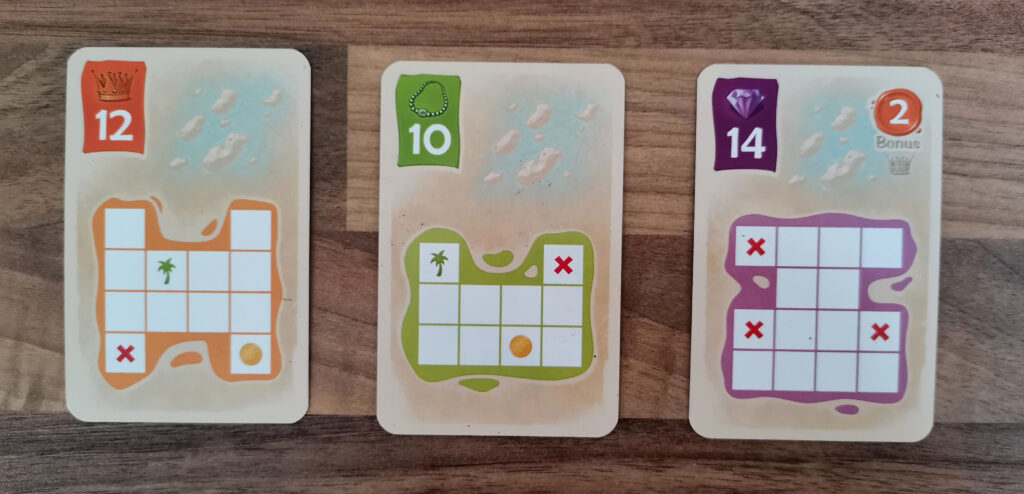
You also score every crossed out coin, the trophy bonuses, and finally the palm tree bonuses. There’s a space for each of the subtotals on your scoring card. The winner is the person with the most total points. Now all you have to do is wipe the cards with a piece of try tissue, and it’s ready to play again!
Final Thoughts
Silver& Gold is a light, quick filler game. It’s perfect to begin or end a games night, or to play with the family if you’ve got younger children. I really like it, it’s very easy to teach, and for those of us who like heavier games and competition, there’s plenty of optimisation to aim for here. Aiming to always be able to cross out an entire shape with each expedition card is important, and using the red cross combos to fill in the awkward gaps on nearly-finished cards feels reminiscent of Ganz Schon Clever (check out the review here).
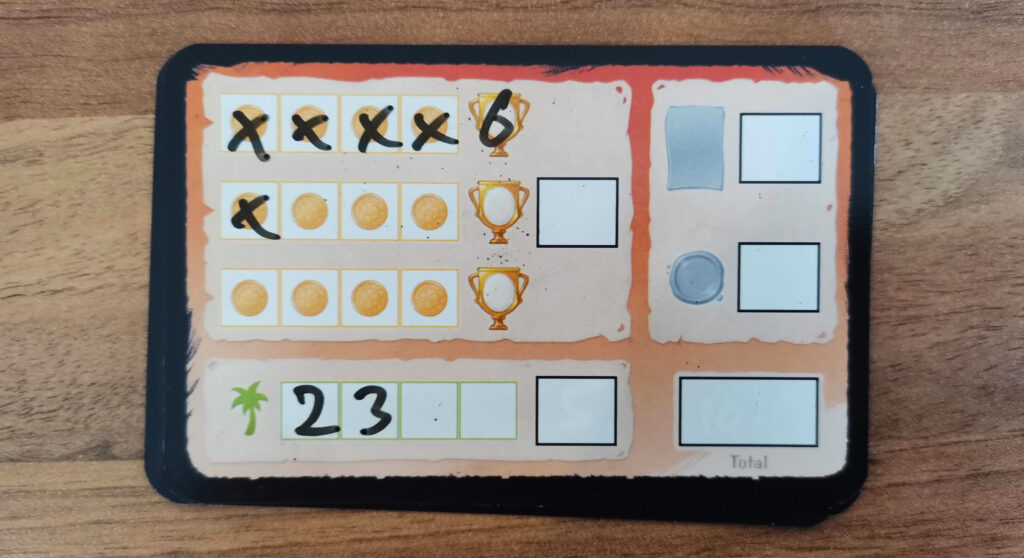
Similarly, it’s not always best to take the highest value cards you can see on the table either. You have to take into account palm trees, coins, and what seals you may be working with for bonus points.
It’s never going to be a game you play for hours, or ever every week, but it’s a charming, fun game, and a great one to get non-gamers engaging in something new and starting to think tactically. Given the fact you can pick it up for less than £12, delivered, if you’ve got a space in your collection for a lightweight filler, or even just a small gap in your Kallax that needs filling, you could do a lot worse. If you’re a fan of games like The Isle of Cats, Patchwork or Cartographers, I think you’ll really enjoy Silver & Gold.
